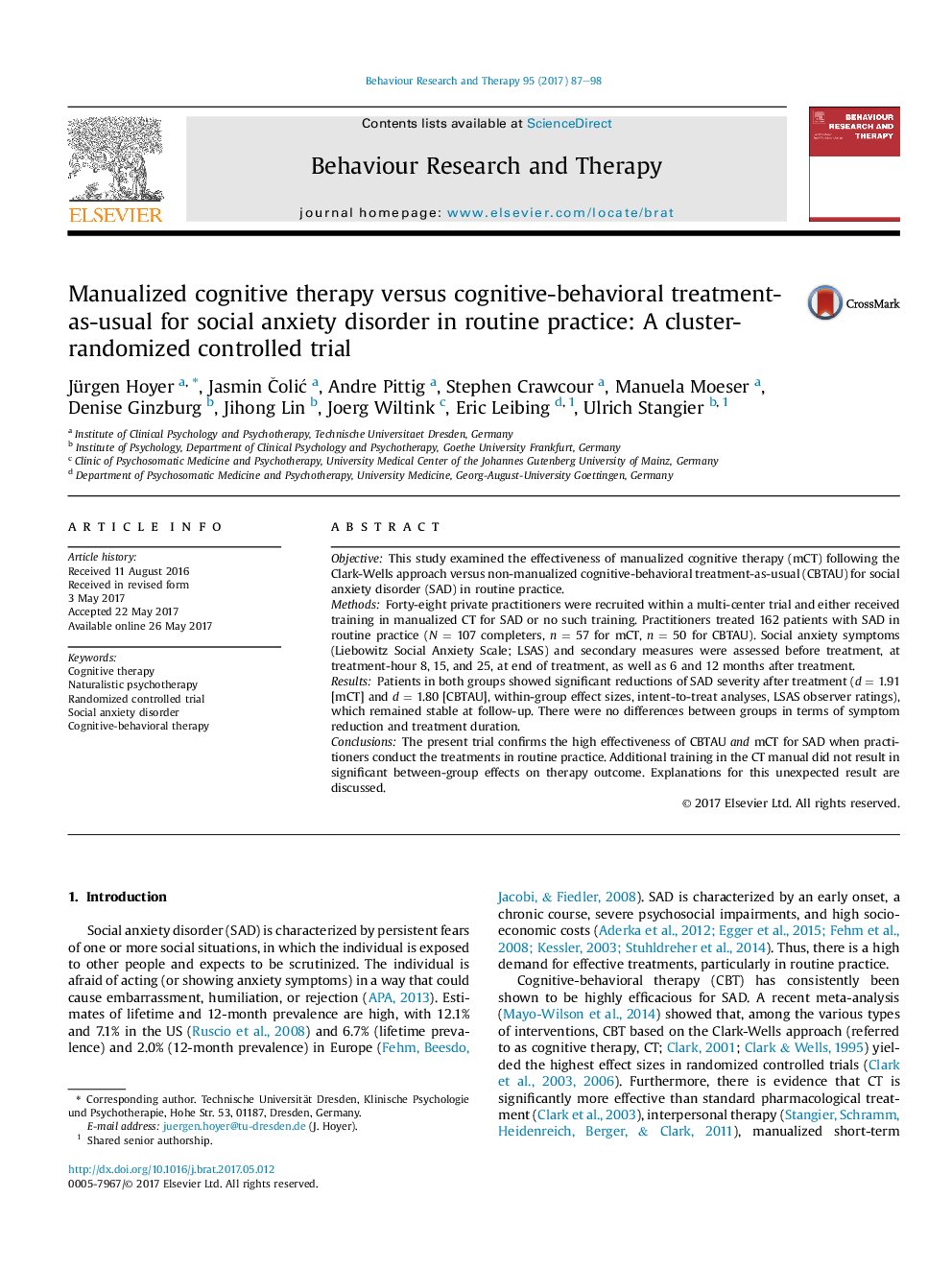| کد مقاله | کد نشریه | سال انتشار | مقاله انگلیسی | نسخه تمام متن |
|---|---|---|---|---|
| 5038251 | 1472754 | 2017 | 12 صفحه PDF | دانلود رایگان |
- Following manual training vs. no training, cognitive-behavioral therapists treated patients with manualized cognitive therapy vs. non-manualized cognitive-behavioral treatment-as-usual.
- Manualized cognitive therapy was accepted and highly effective (within group Cohen's d = 1.29-1.91).
- Manualized therapy did not improve symptom reduction or treatment duration compared to non-manualized CBT, which was also highly effective (within group Cohen's d = 1.13-1.82).
- Lack of superiority of manualized treatment may be linked to non-adherence to in-session behavioral experiments (in the manualized group) and to ceiling effects of efficacy in both groups.
ObjectiveThis study examined the effectiveness of manualized cognitive therapy (mCT) following the Clark-Wells approach versus non-manualized cognitive-behavioral treatment-as-usual (CBTAU) for social anxiety disorder (SAD) in routine practice.MethodsForty-eight private practitioners were recruited within a multi-center trial and either received training in manualized CT for SAD or no such training. Practitioners treated 162 patients with SAD in routine practice (N = 107 completers, n = 57 for mCT, n = 50 for CBTAU). Social anxiety symptoms (Liebowitz Social Anxiety Scale; LSAS) and secondary measures were assessed before treatment, at treatment-hour 8, 15, and 25, at end of treatment, as well as 6 and 12 months after treatment.ResultsPatients in both groups showed significant reductions of SAD severity after treatment (d = 1.91 [mCT] and d = 1.80 [CBTAU], within-group effect sizes, intent-to-treat analyses, LSAS observer ratings), which remained stable at follow-up. There were no differences between groups in terms of symptom reduction and treatment duration.ConclusionsThe present trial confirms the high effectiveness of CBTAU and mCT for SAD when practitioners conduct the treatments in routine practice. Additional training in the CT manual did not result in significant between-group effects on therapy outcome. Explanations for this unexpected result are discussed.
Journal: Behaviour Research and Therapy - Volume 95, August 2017, Pages 87-98
